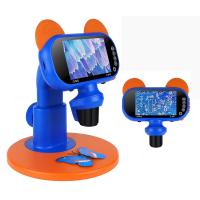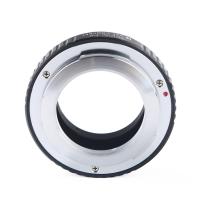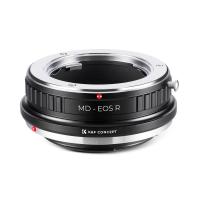Endoscope When On Warfarin ?
Patients who are on warfarin and require an endoscopy procedure should inform their healthcare provider about their medication use. Warfarin is a blood thinner that can increase the risk of bleeding during and after the endoscopy procedure. The healthcare provider may adjust the warfarin dosage or temporarily stop the medication before the procedure to reduce the risk of bleeding. The patient may also need to undergo blood tests to monitor their clotting ability before and after the procedure. It is important for patients to follow their healthcare provider's instructions carefully to ensure a safe and successful endoscopy procedure.
1、 Endoscopy procedure overview

Endoscopy procedure overview is a medical examination that involves the use of an endoscope, a flexible tube with a camera and light at the end, to visualize the inside of the body. This procedure is commonly used to diagnose and treat various medical conditions, such as gastrointestinal disorders, respiratory problems, and urological issues.
However, if a patient is on warfarin, a blood-thinning medication, there are certain precautions that need to be taken before undergoing an endoscopy. Warfarin can increase the risk of bleeding during and after the procedure, so it is important to inform the healthcare provider about the medication and any other blood-thinning medications being taken.
The healthcare provider may adjust the dosage of warfarin or temporarily stop the medication before the procedure to reduce the risk of bleeding. The patient may also be advised to avoid certain foods and supplements that can affect blood clotting.
It is important to follow the healthcare provider's instructions carefully to ensure a safe and successful endoscopy procedure. The latest point of view is that endoscopy procedures can be safely performed in patients on warfarin with appropriate management of the medication and close monitoring for any signs of bleeding.
2、 Warfarin and bleeding risk

Warfarin and bleeding risk are closely related as warfarin is a blood thinner that is used to prevent blood clots. However, it can also increase the risk of bleeding, especially if the dose is too high or if the patient has other medical conditions that increase the risk of bleeding. Therefore, it is important to monitor patients on warfarin regularly to ensure that their blood is not too thin.
One situation where warfarin and bleeding risk may be of concern is during an endoscopy. Endoscopy is a medical procedure that involves inserting a flexible tube with a camera into the body to examine the digestive tract. This procedure can cause bleeding, especially if the patient is on warfarin. Therefore, it is important to manage the patient's warfarin dose before the procedure to reduce the risk of bleeding.
The latest point of view on this issue is that patients on warfarin should not stop taking their medication before an endoscopy unless specifically instructed to do so by their doctor. Instead, the doctor should adjust the warfarin dose before the procedure to reduce the risk of bleeding. In some cases, the doctor may also prescribe other medications to help reduce the risk of bleeding during the procedure.
In conclusion, warfarin and bleeding risk are closely related, and it is important to monitor patients on warfarin regularly to ensure that their blood is not too thin. During an endoscopy, the patient's warfarin dose should be managed carefully to reduce the risk of bleeding. Patients should not stop taking their medication before the procedure unless specifically instructed to do so by their doctor.
3、 Pre-endoscopy preparation for warfarin patients

Pre-endoscopy preparation for warfarin patients is an important aspect of ensuring patient safety during the procedure. Patients who are on warfarin, an anticoagulant medication, are at an increased risk of bleeding during endoscopy. Therefore, it is crucial to manage their medication regimen before the procedure.
The latest point of view is that the decision to stop or continue warfarin before endoscopy should be based on the patient's individual risk of thromboembolism and bleeding. In general, low-risk patients can continue warfarin, while high-risk patients may need to stop warfarin and switch to a bridging therapy.
If the decision is made to continue warfarin, the patient's INR (international normalized ratio) should be checked before the procedure. If the INR is within the therapeutic range, the endoscopy can proceed without interruption. However, if the INR is elevated, the patient may need to have their warfarin dose adjusted or temporarily stopped.
On the other hand, if the decision is made to stop warfarin, the timing of the discontinuation and resumption of warfarin should be carefully planned to minimize the risk of thromboembolism and bleeding. Bridging therapy with low-molecular-weight heparin may be necessary during the interruption of warfarin.
In addition to managing warfarin, pre-endoscopy preparation for warfarin patients should also include a thorough medical history and physical examination, as well as informed consent and patient education about the risks and benefits of the procedure.
In conclusion, pre-endoscopy preparation for warfarin patients is a complex process that requires careful consideration of the patient's individual risk factors. The decision to stop or continue warfarin should be based on the patient's risk of thromboembolism and bleeding, and the timing of medication management should be carefully planned to ensure patient safety.
4、 Alternative anticoagulants for endoscopy patients

For patients who are on warfarin and require an endoscopy, the use of an endoscope is generally safe and effective. However, there are some risks associated with the procedure, including bleeding and the potential for blood clots to form. As a result, it is important for patients to work closely with their healthcare provider to manage their anticoagulation therapy prior to the procedure.
One alternative to warfarin for endoscopy patients is the use of newer anticoagulants, such as dabigatran, rivaroxaban, and apixaban. These medications have been shown to be effective in preventing blood clots and reducing the risk of stroke in patients with atrial fibrillation. However, they may also increase the risk of bleeding during endoscopy procedures.
The latest point of view is that the decision to use an endoscope or alternative anticoagulants for endoscopy patients should be made on a case-by-case basis, taking into account the patient's individual risk factors and medical history. In some cases, it may be appropriate to temporarily stop anticoagulation therapy prior to the procedure, while in others, the use of an endoscope may be the safest option.
Ultimately, the decision to use an endoscope or alternative anticoagulants for endoscopy patients should be made in consultation with a healthcare provider who is familiar with the patient's medical history and current anticoagulation therapy. By working together, patients and healthcare providers can ensure that the best possible care is provided while minimizing the risks associated with endoscopy procedures.





























There are no comments for this blog.